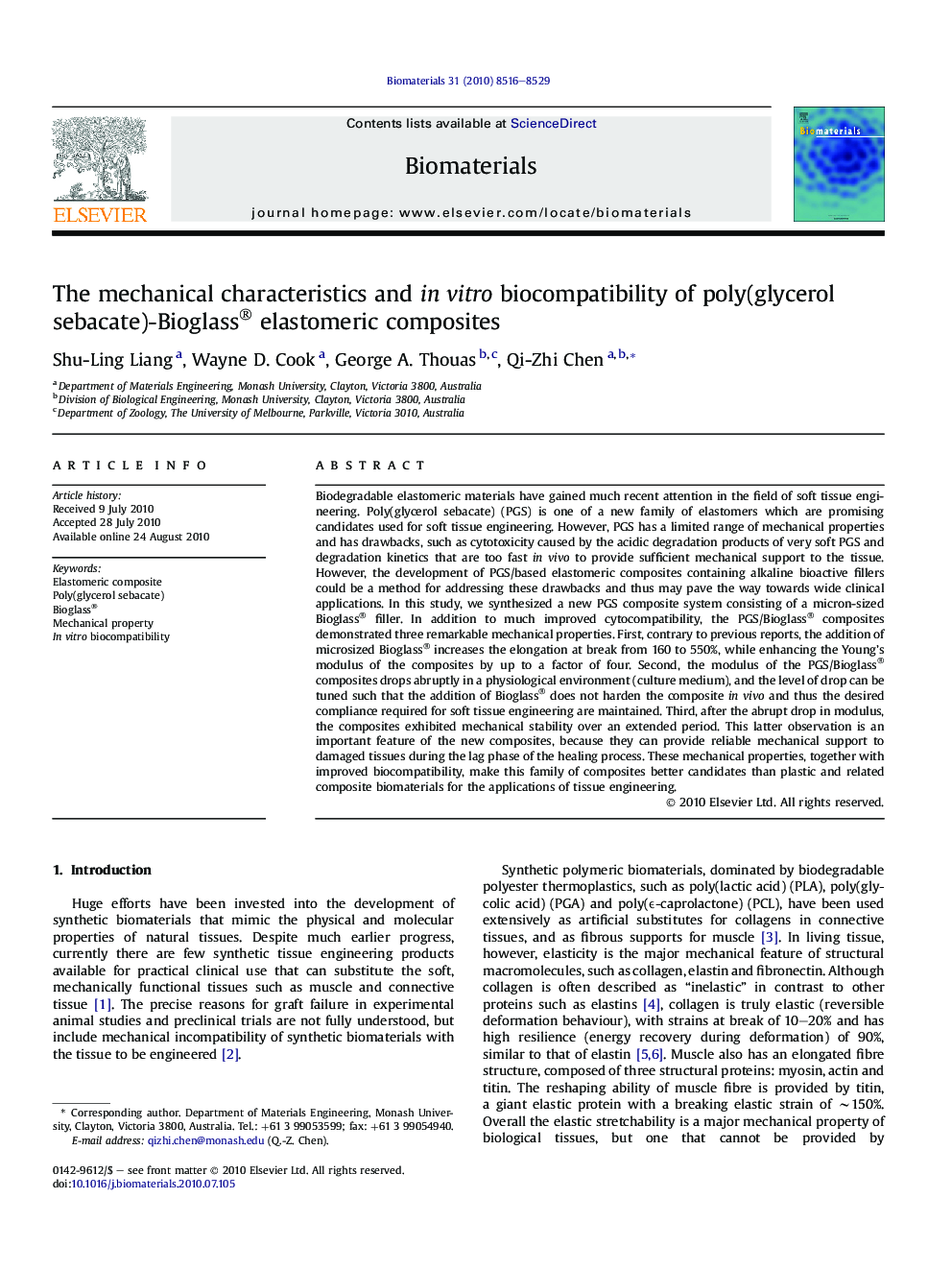| کد مقاله | کد نشریه | سال انتشار | مقاله انگلیسی | نسخه تمام متن |
|---|---|---|---|---|
| 8835 | 608 | 2010 | 14 صفحه PDF | دانلود رایگان |

Biodegradable elastomeric materials have gained much recent attention in the field of soft tissue engineering. Poly(glycerol sebacate) (PGS) is one of a new family of elastomers which are promising candidates used for soft tissue engineering. However, PGS has a limited range of mechanical properties and has drawbacks, such as cytotoxicity caused by the acidic degradation products of very soft PGS and degradation kinetics that are too fast in vivo to provide sufficient mechanical support to the tissue. However, the development of PGS/based elastomeric composites containing alkaline bioactive fillers could be a method for addressing these drawbacks and thus may pave the way towards wide clinical applications. In this study, we synthesized a new PGS composite system consisting of a micron-sized Bioglass® filler. In addition to much improved cytocompatibility, the PGS/Bioglass® composites demonstrated three remarkable mechanical properties. First, contrary to previous reports, the addition of microsized Bioglass® increases the elongation at break from 160 to 550%, while enhancing the Young’s modulus of the composites by up to a factor of four. Second, the modulus of the PGS/Bioglass® composites drops abruptly in a physiological environment (culture medium), and the level of drop can be tuned such that the addition of Bioglass® does not harden the composite in vivo and thus the desired compliance required for soft tissue engineering are maintained. Third, after the abrupt drop in modulus, the composites exhibited mechanical stability over an extended period. This latter observation is an important feature of the new composites, because they can provide reliable mechanical support to damaged tissues during the lag phase of the healing process. These mechanical properties, together with improved biocompatibility, make this family of composites better candidates than plastic and related composite biomaterials for the applications of tissue engineering.
Journal: Biomaterials - Volume 31, Issue 33, November 2010, Pages 8516–8529